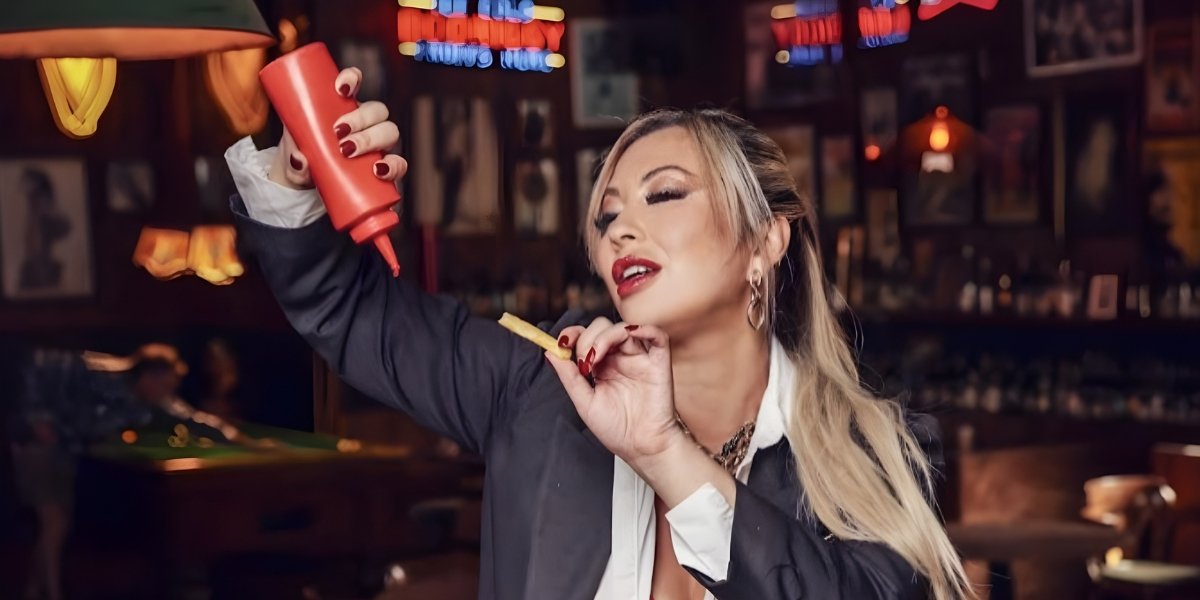Lo-fi music has become a familiar presence in homes, coffee shops, and study spaces around the world. It is the gentle soundtrack for late-night work sessions, quiet mornings, and moments of calm contemplation. This popular music genre is distinct for its warm, often slightly imperfect sound, characterized by subtle imperfections like vinyl crackle or tape hiss. It almost presents a paradox: in a world striving for crystal-clear audio, why would a sound defined by “low fidelity” capture so many listeners? The story of lo-fi is indeed a fascinating journey, tracing its path from a mere technical limitation to a cherished aesthetic and, ultimately, a global cultural phenomenon.
Read also: How to Create a Beat: A Guide for Aspiring Music Producers
The Roots of “Low Fidelity”: From Recording Flaws to Artistic Choice
Understanding the origins of lo-fi music begins with its very name. “Lo-fi” is a direct abbreviation for “low fidelity,” which in audio terms simply means that the reproduced sound isn’t perfectly clear, pristine, or true to its original source. It often includes characteristics like audible imperfections such as tape hiss, the subtle crackle of vinyl, static, hums, or a somewhat limited frequency range, meaning less crisp highs and less powerful lows.
In the very early days of recording technology, this “lo-fi” sound was often an unavoidable reality. Before sophisticated multi-track recorders and digital production, the equipment was rudimentary. Because of this, recordings from early blues artists, pioneers of rock and roll, and garage bands from before the 1970s often naturally possessed this less-than-perfect audio quality, born out of necessity rather than a deliberate artistic choice.
However, a significant shift occurred with the DIY recording revolution of the 1970s and 1980s. The advent of more affordable home recording technology, particularly multi-track cassette recorders, empowered musicians in a groundbreaking way. No longer entirely reliant on expensive professional studios, artists, especially within punk, indie rock, and experimental scenes, could record their music independently. Bands like Guided By Voices and Sebadoh became known for embracing these sonic imperfections as a deliberate artistic choice. They valued the raw authenticity, immediacy, and often intimate feel that came from bedroom recordings, preferring it over the polished, commercial sound of major studio productions. It was during this era that college radio DJs, such as William Berger, played a role in popularizing “lo-fi” as a descriptive term for this emerging aesthetic in the mid-1980s, highlighting its unique sonic fingerprint.
The Hip-Hop Connection: Forging a New Atmospheric Sound
While the independent rock scene cultivated the aesthetic, lo-fi music found a particularly fertile ground in the world of hip-hop, where it began to take on its modern, atmospheric form. The very foundation of early hip-hop production naturally carried a certain “lo-fi” character. It often relied on sampling old records, particularly funk and soul drum breaks, which themselves often came with inherent vinyl crackle or muffled sounds. Combine this with early recording setups that were sometimes less than pristine, and a raw, gritty sound was intrinsically part of the genre’s DNA.
However, it was the pioneering beatmakers of the 2000s who truly cultivated and refined this intentionally imperfect sound within instrumental hip-hop, shaping what would become lo-fi hip-hop. J Dilla, an American producer, stands as an immense influence. His unique approach to drum programming, often characterized by a slightly “swung” or “imperfect” feel, combined with his soulful sampling and raw production, created a distinct, emotive sound heard on albums like Donuts. Across the Pacific, Nujabes, a Japanese producer, crafted a truly distinct style. He blended jazzy samples with melancholic, atmospheric instrumental hip-hop beats, creating a soundscape that resonated globally. His contributions to the soundtrack of the 2004 anime series Samurai Champloo were particularly impactful, forging an early and lasting visual link for the genre that would become iconic. Other artists like Madlib and MF Doom, notably through their collaborative album Madvillainy, further popularized a unique, unpolished yet highly influential sound that echoed the lo-fi aesthetic.
The availability of specific sampler technology also played a significant role. Digital samplers such as the Roland SP-303 and SP-404, popular with beatmakers, had built-in “lo-fi” effects. These features explicitly encouraged producers to deliberately degrade samples, add artificial vinyl crackle, or introduce tape hiss, incorporating these elements as integral stylistic components rather than accidental flaws.
The Internet’s Catalyst: Streaming, Algorithms, and Visuals
The true explosion of lo-fi music into a global phenomenon in the 2010s was undeniably fueled by the internet, particularly the rise of streaming platforms and their unique visual culture. YouTube’s unforeseen impact proved to be a major catalyst around the mid-2010s. Independent creators and channels began broadcasting 24/7 live streams of continuous, chill, instrumental lo-fi beats, offering an endless supply of background music for various activities.
A crucial moment came with the iconic “Lofi Girl” phenomenon. The channel “ChilledCow,” which later rebranded as “Lofi Girl,” gained massive popularity from around 2017 onwards. Its continuous live stream featured a simple, repeating animation of an anime-style girl studying diligently at her desk, often with a window looking out onto a cityscape. This instantly recognizable visual not only cemented the genre’s aesthetic but also clearly defined its primary function for a huge audience: perfect background music for studying, working, relaxing, or quiet contemplation. The “lo-fi aesthetic” quickly encompassed both sound and a particular visual style, making it highly marketable and shareable.
Beyond specific channels, algorithmic discovery and curated playlists on major streaming services like Spotify and YouTube played a huge role. Their algorithms recognized the burgeoning popularity of these ambient sounds, leading to the creation and heavy promotion of popular “lo-fi beats” playlists. These playlists introduced lo-fi music to millions more listeners, propelling the niche sound into mainstream awareness and continuous rotation.
Read also: How Collaborations Between Musicians and Influencers Are Changing Music Promotion
The Enduring Appeal: Comfort, Nostalgia, and Functionality
The lasting popularity of lo-fi music can be attributed to several profound psychological and practical reasons. One significant factor is its psychological soothing effect. The gentle, often repetitive, and unobtrusive nature of lo-fi music creates a calm sonic environment. For many listeners, it can reduce anxiety, quiet a restless mind, and even aid concentration by providing a consistent, low-distraction backdrop.
There’s also a powerful touch of nostalgia at play. The intentional imperfections in the sound, whether it’s the gentle crackle of vinyl, the subtle hiss of tape, or slightly muffled tones, evoke a strong sense of nostalgia. It conjures images of older recording formats, perhaps simpler times, or a more analog era, resonating deeply with listeners who find comfort in these familiar sounds.
Crucially, lo-fi music excels in its unobtrusive functionality. Unlike many other genres designed to capture full attention, lo-fi is specifically created to be played in the background without demanding focus. This makes it ideally suited for a variety of activities: studying, working, relaxing, unwinding, or even sleeping. Its non-distracting quality allows it to blend seamlessly into a listener’s environment, enhancing focus or calm without becoming a primary distraction. Furthermore, for many, its raw, often bedroom-produced feel and lack of overt commercial polish provide a sense of authenticity, standing as a quiet counterpoint to overly polished mainstream music.
The Enduring Melody of Imperfection
The journey of lo-fi music is a remarkable tale of transformation. What began as a technical limitation in early recording evolved into a deliberate artistic choice within the DIY music scenes, was refined through experimental lo-fi hip-hop beatmaking, and finally exploded into a global phenomenon via internet streaming and iconic visuals.
Its unique appeal is driven by a powerful blend of psychological comfort, a warm sense of nostalgia, and its unparalleled functionality as unobtrusive background music. The enduring popularity of this seemingly “imperfect” music genre showcases a widespread modern appreciation for authenticity, quiet ambiance, and a gentle sonic presence in a world often saturated with noise. It proves that sometimes, the most accidental sounds can create the most profound and lasting impact.










